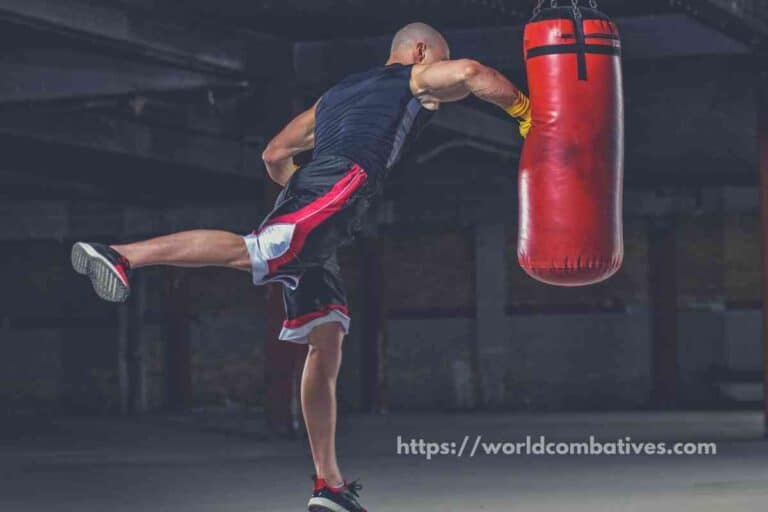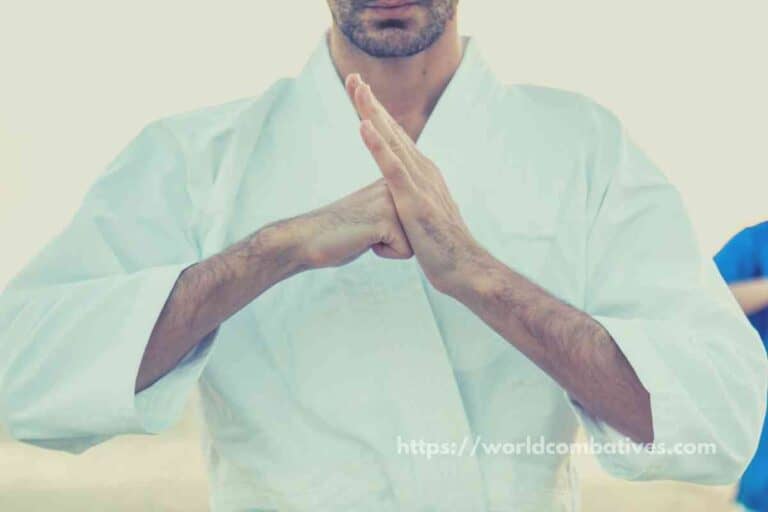Does Jeet Kune Do have sparring?
Upon starting to learn martial arts, one of the most common questions you may ask is if a martial art has some sort of sparring. That involves Jeet Kune Do. There is just some fun practicing what you’ve learned with actual opponents and sparring can give that enjoyment. So, does Jeet Kune Do have sparring?
Jeet Kune Do has sparring sessions. However, you need to take note that Sparring in Jeet Kune Do is always under the supervision of an experienced trainer. This is to prevent any unwanted injuries. Furthermore, it is a good idea to wear some protective equipment when sparring.
But are there any actual benefits in sparring? Also, did you know that before, sparring is not allowed in Jeet Kune Do? We are going to talk about history, benefits, and how an actual JKD sparring session happens in this article. Let’s see.

Do you spar in Jeet Kune Do?
You can spar in Jeet Kune Do because sparring helps you know the real-life applications of the moves you’ve learned. That’s why most Jeet Kune Do schools would let you spar with your fellow students. However, take note that every sparring match should be under the supervision of an experienced trainer.
Does Jeet Kune involve sparring, but before we move on to that, let’s first know what sparring is?
Sparring is a form of training used in combat sports like martial arts, Kung Fu, etc.
It is making a particular type of move without causing any heavy blows or serious harm to the sparring partner. It is a form of a friendly battle where both participants should learn with each other.
Sparring is “free-form” fighting and has different rules, agreements, and practices that should be followed in order to minimize injuries.
To answer the question, Jeet Kune Do involve sparring because it is a form of mixed martial arts and uses different techniques to match with the partner.
Jeet Kune Do involve sparring because to practice actual fighting scenario, sparring is necessary.
Martial arts that don’t involve sparring cannot make you a real fighter. So sparring can get you some bruises and blows, but these sparring matches will make you a real fighter.
Thus, Jeet Kune Do involves sparring.
However, take note that sparring should not involve extreme harm to the opponent. It is only a simulation of a match and the ultimate goal is to learn from each other.
Jeet Kune Do is a mix of different martial arts.
The main idea behind sparring is to make both opponents better at what they do. In every sparring match, you should become better than last time as it is the primary purpose behind sparring.
In this way, you can create a good flow and grasp the moves you are learning with your opponent and it will also increase your skills as sparring is actually not fighting.
You will learn new skills, develop swift and faster reactions for the next fight, so sparring is helpful for you, and Jeet Kune Do also involves sparring, which makes everything better.
Sparring has a history in Jeet Kune Do because when Bruce Lee first gave the idea of Jeet Kune Do, one thing was avoided, and it is contact training.
Contact training is basically touching your opponent. That’s why it is called contact.
Since you are touching your enemies in any sparring session, it is considered as contact training.
At first, contact training was considered an unnecessary practice while training. Also, it was a rule to stop the attack of punches and kicks from the target as it was considered as lack of control.
If we look back, there was also a talk about full-contact training.
But then the teachers who learned JKD from countries like Japan, Korea, etc., and had a significant experience of sparring and told them that no-contact training is a part of the process and should be done.
While full-contact training can only be permitted in case of heavy padding for the torso and head is given.
So, when every sparring match is in the hand of teachers who knew and have good old practice, then sparring is entirely safe and done in Jeet Kune Do.
Furthermore, it has another benefit.
Sparring allowed finding out which moves are actually effective and the moves were proven during sparring.
And this is really essential since JKD is a martial art that focuses on finding the most effective moves.
Sparring is a practice that makes the person and the opponent give and develop a quick response and train people to build new skills.
Jeet Kune Do has focused on these two main things that are as follows;
- Jeet Kune Do tries to follow the real-world technique that is state-of-the-art and plays a fundamental part in society.
- People who do Jeet Kune Do believes in a lot of sparring.
So, if one of their main focuses is doing a lot of sparring, then this means sparring is considered a crucial part of Jeet Kune Do.
Also, people who think you can get any kind of serious injuries or even brain damage are mostly wrong.
This is because trainers are trained to check and view sparring matches.
That’s why make sure to spar only when you have training looking at you since it prevents any unwanted injuries.
This is why sparring is done under the comprehensive observation of trained practitioners who have taught people a lot and are very well-trained.
So they keep track of things, and if anything goes wrong, they immediately bring out a solution to the problem.
Lastly, you should always be equipped with protective gear while sparring, so there is no chance of brain damage in it.
Sparring is different in Jeet Kune Do.
It is done differently; things are a little change here.
Because their main focus is to sharpen both opponents’ minds, they use this isolation technique, where a person spars solo to gain more practice.
Then it is also done with opponents by using grappling techniques, pummelling and jab sparring, etc.
How does the sparring session take place in Jeet Kune Do?
Here are the basics of how a sparring session in JKD takes place.
- Wear Protective Equipment
- Keep Calm and Breathe
- Make Eye contact with the opponent
- Focus on learning and not winning
- Introduce yourselves
- Go to guard position
- Watch out for strikes and use what you’ve learned
A sparring session takes place in different steps.
But before those steps, protective gear is a mandatory requirement.
Most of the time, Thai pads, gloves, and focus pads are worn before the sparring session. Sometimes a fist suit or glove is worn by students.
The key to starting a sparring session is to keep calm in your ring.
Make yourself relaxed, keep calm and breathe.
Look into your opponent’s eyes and make good eye contact with them.
Find a comfortable boxing stance, and one of the essential things that should be in your mind is that the primary focus should be on learning, not winning.
Because it is all about growing with every single step. So, keep your head at chest level, throw punches, and exhale with every passing punch to lose the pressure.
Following these steps will help a lot in achieving success.
Now moving to the session, first of all, you introduce.
It is like a bit of introduction that you are about to start a sparring session. Resistance is being built up in this first step. Both of the opponents slowly increase their energies and wait for the right moment.
Secondly, the guard position is taken.
In this situation, the opportunity needs to be created, and both opponents have to find a way to sweep in and do what they were trained to do.
Lastly, actual sparring starts like jabs and grappling are done. Even a stand-up can be done.
If there is an opportunity, grab it and make your move. You need to make a move and present yourself that you are a true sparrer.
But don’t exploit it by fixating on this only thing.
So this is how a sparring session takes place. Specific techniques need to be followed and kept in mind to make the session more intense and exciting.







